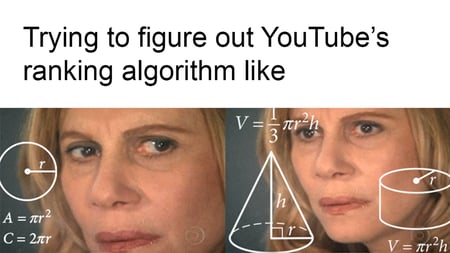At the foundation of all things ranking lies a very basic concept: no matter how much you push or promote shitty content, nobody is going to watch it. And if nobody interacts with your video, it is not going to rank.
In YouTube’s “Get Discovered” Academy course, the creators of the world’s third largest search engine share, “Instead of worrying about what the (YouTube) algorithm 'likes,’ it's better to focus on what your audience likes instead.”
You need quality, share-worthy content that gets watchers jazzed to even start the ranking conversation— so take a hard look at your script and be honest with yourself.
If your content is pretty mundane, read this first: How to Make Bomb-ass Video Content.
Seriously, don’t waste your time trying to rank a video that’s just not worth watching.
Here are some ways YouTube’s algorithm weighs your videos:
YouTube Ranking Factor #1: Keywords
When you do traditional keyword research, you consider search volumes and competitive difficulty to see how well your content could rank for those terms.
YouTube search is no different— keyword research matters and it matters a lot.
If you don’t understand the importance of developing a marketing strategy for your YouTube videos or you don’t know how to pick keywords, you might need to do some initial homework.
Once you determine the best keywords for your business and hone in on your goals, here are some ways you can please YouTube’s algorithm with SEO magic:
- Prioritize mentioning your target terms in your video script. Your video transcript is what YouTube search bots actually screen and read, so it’s the biggest cue of what your video is actually about, AKA your largest SEO asset.
- Check your closed captioning, AKA your "Transcriptions." Once uploaded, YouTube will try to auto-generate your transcript, but you need to make sure it’s accurately hitting your keywords and not thinking you said “peed gelation” instead of “lead generation”— because, this shit happens.
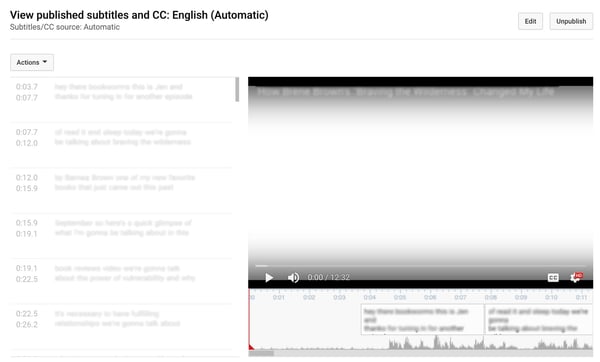
- Say your keyword early. Videos that have their keyword towards the beginning of their title have been proven to have little bit of an edge over those in which it’s buried towards the end. Try to splash your keyword into the first 15 seconds of your video.
- Sprinkle your keywords everywhere, but be authentic. Say them while recording, add them in the title of the video, its file name, its thumbnail name, in the YouTube video description, the closed captioning, video and channel tags, as well as video and channel comments. But don’t be stuffy. Just as Google penalizes pages with irrelevant or overused keywords, our favorite video search engine will also flag spammy content.
- Once posted for a few weeks, review your traffic sources in YouTube Studio (AKA their Analytics). Guess what? YouTube will tell you what phrases people are searching to find you. This can help you update your description, tags and more to improve your ranking. See the image below.

Honorable Mention: Video Tags
YouTube search relies on its own “tags” to help viewers find particular videos.
These tags could be single words (ex. “marketing”) or more specific long-tail terms (ex. “marketing for beginners”) that are labels for what your video is about.
They matter for YouTube SEO, but can harm your channel if abused:
- Tags help searchers find you, but they’re not exactly “keywords.” YouTube tags help the search engine categorize, but they don’t necessary have the same impact as keywords. However, they can help you rank in the search engine’s related videos sidebar and to get more traffic. Make sure you add your own tags when you upload your video.

- Tag-stuffing won’t help you rank. The search engine tells user right up front to not stuff tags into your YouTube description— that it could actually trigger penalization on the result pages.
- YouTube reads your transcript and will call bullshit on your phony tags. Tags help the search engine, so your videos and channel should have definitely them. But if you post a video about pandas and tag it as “bears,” the search engine won’t be fooled.
- Competitor's tags are hidden by users, but you could see them if you really want to. If you need help determining relevant YouTube tags, do some competitor research using TubeBuddy, which allows you to see tags on individual videos as well as user’s channels.
YouTube Ranking Factor #2: Watch Time & Video Retention
When YouTube first began, it relied on view count alone to determine rankings, which didn’t always accurately reflect the quality of the video.
Users gamed the system and bought or elicited phony views, making it harder and harder to determine if “viewers” actually found value in the video, or were even watching it at all.
That’s why YouTube started putting a higher emphasis on watch time and retention metrics.
Here are some important things to consider:
- YouTube's algorithm values viewing session length more than views. Once upon a time, YouTube had a “Views Report,” but they actually removed it from their Analytics section and replaced it with a “Watch Time Report.” This illustrates that although video views are great, they mean less to the search engine than actual watch time. Consider your video retention metrics too, or the percentage of your video actually being watched, when analyzing your videos.
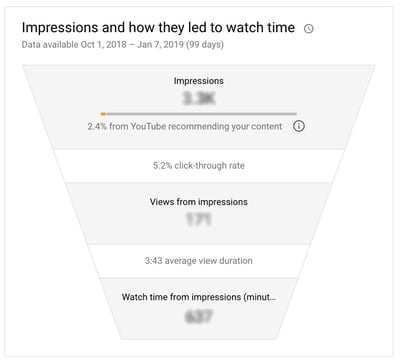
- Don’t forget what you know about bounce rate. Bounce rate is just as much as a problem for video views as it is website visits. If a user watches 10 seconds and leaves, it tells YouTube’s algorithm it wasn’t very helpful and could cause it to be served less for that query.
- Longer videos just rank better in YouTube search. One study by Backlinko analyzed over one million YouTube videos and found that the average length of a video ranked on page one was just under 15 minutes long. Longer videos simply pack in more info, that is, if the length doesn't sacrifice depth. Learn more about adding depth to your content here.
- Watch time is NOT simply how much of your video was watched. YouTube's algorithm also weighs how much your video contributed to a users’ overall sessions, or what other videos a user watched right after yours. Create playlists to keep viewers exploring, and do some exploring of your own, to see how the search engine picks its recommended videos. Hang tight for more insights on playlists in our section on view count.
Honorable Mention: Video Quality
Search engines like Google and Bing use backlinks to determine trust and quality. YouTube’s algorithm, on the other hand, relies heavily on user interactions to determine “quality” instead.
Simply put, people won’t interact with a poorly produced video. If it's grainy, the audio is muffled or if it's edited sloppily, you're going to lose the viewer— near instantly. But even high-production videos can bomb if they aren't formatted correctly.
Here are some ways to ensure your video quality is on point:
- Shoot in high definition (HD). High definition generally counts as anything shot in the aspect ratio of 1280x720 or higher. According to this study, HD videos dominate YouTube’s search results. Also, keep in mind that many users are no longer watching videos just on their phones. People cast them to their TVs now. Hell, some channels are even uploading their videos in 4K, AKA Ultra HD. Our advice: smoke 'em if you got 'em.
- Create a custom, eye-catching thumbnail. YouTube will automatically generate a thumbnail for you, but custom images with text, excited faces and a 16:9 ratio tend to outperform plain Jane images, getting more clicks and helping you create a consistent brand. These thumbnails also contribute to your SEO, so be sure to optimize your image, every time.
- Get the right equipment and film space. The quality of your production matters too. Users don’t want cluttered backgrounds, shakey tripods or echoey audio. Invest in quality materials for quality results.
YouTube Ranking Factor #3: View Count
YouTube wants to see that tons of people are watching your videos. In fact, according to the search engine lords themselves, they monitor count accuracy closely so “that videos are being viewed by actual humans and not computer programs.”
YouTube has reasons for ensuring views are real, one being protecting companies who invest in advertising on the platform.
But for you, simply think of more views as more eyeballs on your brand.
Here are some tips for getting authentic YouTube views:
- Embed your videos in SEO-juiced-up blog posts or website pages. Expand more thoroughly on your video topic in an optimized blog post, where you embed your video. YouTube’s algorithm likes it when people watch its videos off of the its platform and on different devices for diversity.
- Add your video to playlists. Find the most popular related videos and stick them in a playlist about your topic, created on your channel. Add your video in the number two or three playback slot so that after a viewer clicks to watch other popular videos, yours gets served up next.
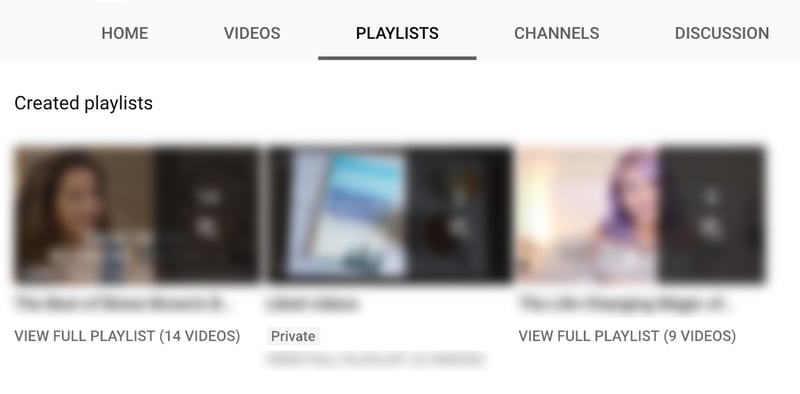
- Share your videos on social media, through email blasts and anywhere you can get eyeballs on it. Sharing is caring. Not only will you increase your YouTube views, but if you ask others to share using the social widgets on your YouTube page, those user behavior metrics signal to the search engine that people find it pretty engaging and helpful.
Honorable Mention: View Diversity
YouTube can be watched in 17 different countries! That’s a wide spread of eyeballs.
Look at your channel metrics to see where watchers are finding you:
- Consider different cultural motivations. If you’re getting tons of views from Germany, think about how your content serves that country’s interests and how could you leverage it for greater reach.
- Add foreign language subtitles. Cater to international audiences by uploading translations in popular languages.
- Leverage diversity of domains. For those who understand SEO, you know that link metrics are a super important ranking factor to Google. The same goes for YouTube. Share your videos and encourage others to embed or link out. Look for sites with high domain or page authorities and different IPs (.com, .gov, .edu, etc.). Make sure they're sticking keywords in the anchor text too and all this other link building mojo.
YouTube Ranking Factor #4: Engagement
The search engine has announced time and time again that YouTube’s algorithm follows the audience, paying attention to engagement signals such as video likes and dislikes, user feedback in comments and more.
In that way, YouTube itself isn’t judging what content is good and bad, rather, your audience is. That's why you always, always, always want to include a call-to-action, or a CTA.
Encourage your audience to interact by considering these tips:
- Simply ask your watchers to interact. Within your video, ask users to let you know what they think by leaving a comment, subscribe if they want more or give the page a thumbs up.
- Sharing is caring. Ask watchers to use the social icons under the video to share it on their network. It spreads your message, expanding your outreach and sending signals to YouTube that the watcher found your content worth watching again.
- Encourage users to click through to links in your description or your related videos. Sometimes YouTube users will add tracking codes to certain URLs in order to see what traffic came from their videos. You can also add text and buttons to appear over your videos to keep users watching more.
Honorable Mention: Channel Interaction
Sure, it’s awesome to ask users to interact with your video, but how about with your entire YouTube channel?
Your channel is your homebase and should be optimized just as thoroughly as your individual videos if you want to show up in YouTube search results.
- Subscribers are engagement at its finest. Subscribers are seeking out your content, “making a public declaration of allegiance and alignment to your messages and values,” according to YouTube Creators. So demonstrate your knowledge! Get in a publishing ritual or do whatever you have to do to build a following.
- Leave channel comments. In the same way that people can comment on individual videos, they can comment on your channel page. Ask your evangelists to share why others should subscribe!
- Make a kick-butt channel trailer. Sell your channel with its own welcome video for new visitors. Add some call-to-action cues to ask them to subscribe and interact with your content.
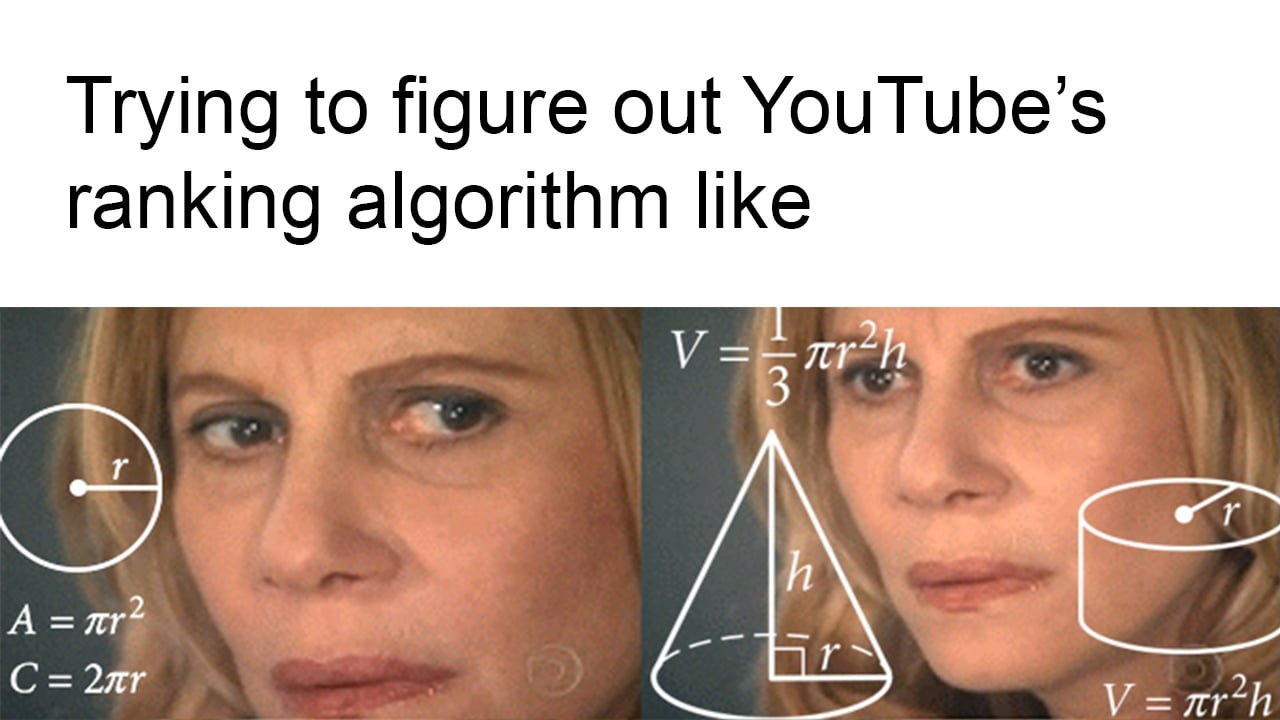
Want to Keep Ranking Higher?
Of course you do!
You are leaving with some sweet insights about YouTube’s algorithm, but how about Google’s? Download our Google Ranking Casserole Cookbook for some scrumptious ingredients to land your content on page one of the world’s largest search engine.
Not sure you want to do it all alone? We're here to help. Did we mention we do Video Marketing? Let us do the recording and editing for you. Or, check out our Search Engine Optimization services page for help getting your awesome videos ranking.

